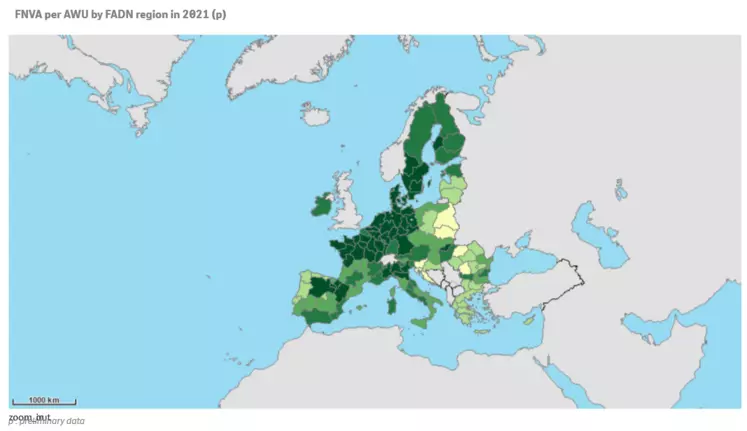For 15 years, the income gap between large and small farms in Europe has significantly widened, reaching record levels. While large farms largely benefit from the rise in food prices caused by geopolitical crises, small farms see their margins shrink to such an extent that their very existence is threatened. Financial pressure leads many of these small farms to cease operations, resulting in a significant decline in their numbers.
In Europe, the gap in income between large and small farms has considerably deepened over the past 15 years. While large farms continue to reap most of the profits, small farms experience low financial margins, threatening their survival. Data shows a dramatic increase in profits for large producers, particularly after the rise in food prices due to the war in Ukraine.
A coalition led by the European Commission proposes radical measures to support small farmers and reduce pollution. However, this situation occurs in a political context marked by a shift to the right, where environmental regulations are sometimes criticized. Small farms, often bought out or closed, disappear, while young people continue to migrate to cities.
Statistics show that since the 2010s, farms of less than 30 hectares have decreased by a quarter. The economic imbalance in agriculture is exacerbated by technological advancements that only large farms can adopt. Small producers struggle to keep up with this trend, resulting in a permanent restructuring of the European agricultural sector.

discovering the income gap between large and small farms
In Europe, the gap in agricultural income between large and small farms has alarmingly increased over the past 15 years. Recent figures indicate that this gap has doubled, coinciding with a radical drop in the number of small farms. According to data from the European Commission, large farms benefit from increases in food prices following geopolitical tensions, tripling their profits.
Small farms are greatly affected by this trend. Extremely thin profit margins do not allow these farms to survive against the giants of the agricultural industry. As a result, many have been forced to close, echoing the frustrations expressed by farming families. The economic situation does not favor the necessary investment for technological upgrades, further exacerbating this gap.
impact of agricultural policies and subsidies
In a context of economic crisis for small farms, recommendations to reform agricultural subsidies have been proposed by a coalition of European stakeholders. Radical proposals include reducing subsidies focused on polluting mass production, to redirect this support towards farms that implement sustainable practices. The President of the European Commission advocates for a change to ensure the survival of small farms.
In some regions, the pressure from environmental laws sparks a lively debate. Large agricultural farms, often seen as the voices of protest, risk diverting attention from the critical needs of the smallest farms. Political reforms must directly address the structural difficulties of small farms, often excluded or underrepresented in discussions on the European political stage.
technology and income inequalities
The increase in the agricultural income gap is heavily influenced by technical advancements, which benefit large farms due to their ability to invest in more efficient machinery. Where small farms struggled with rudimentary equipment, their larger counterparts opt for multi-ton machinery capable of reducing the need for human resources. This modernization deepens profitability gaps per agricultural worker.
Articles similaires
Thank you!
We will contact you soon.














